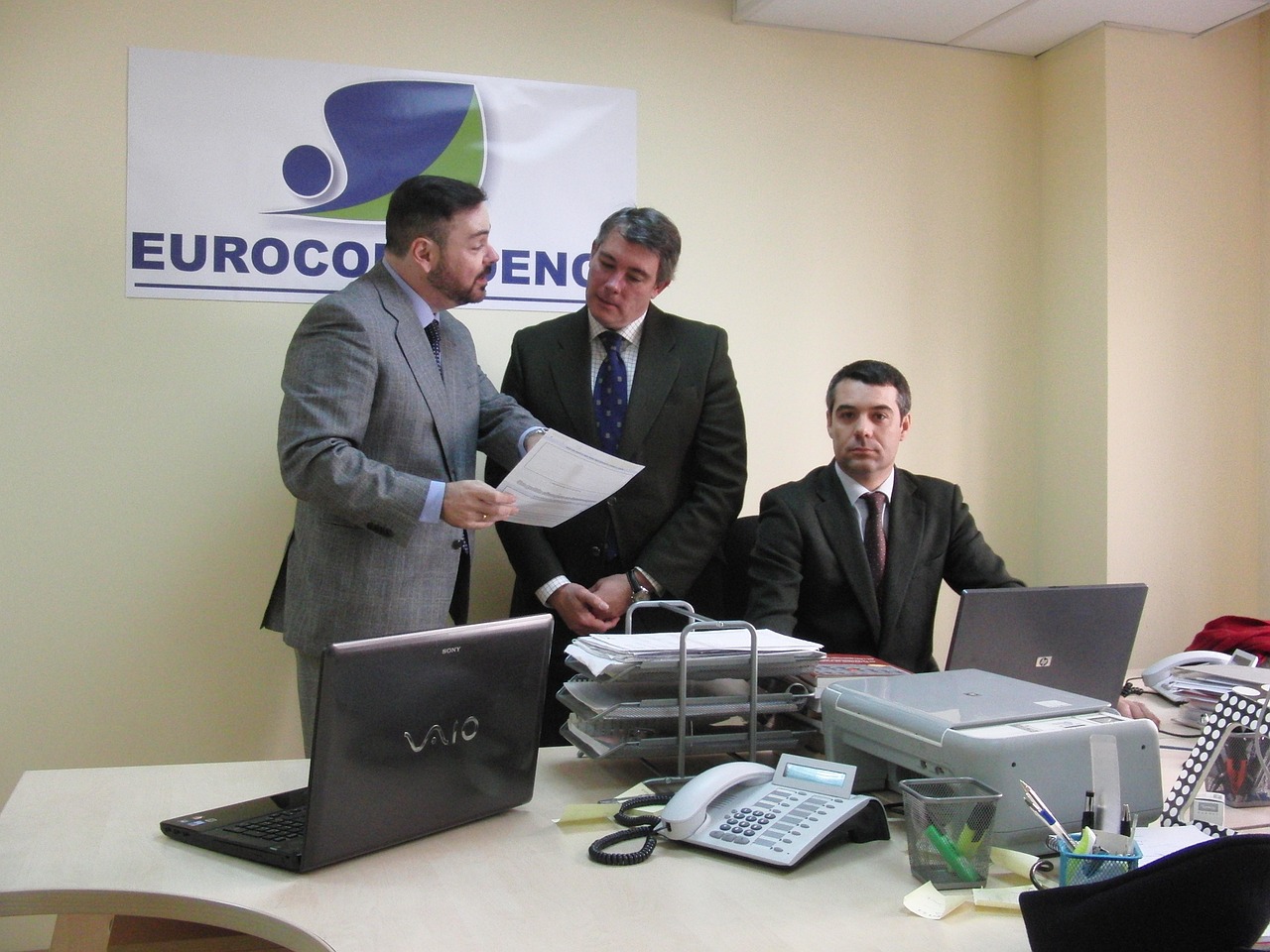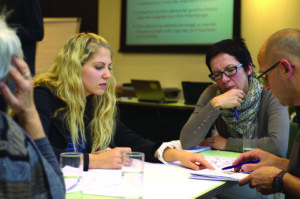In the modern world, the place you work can change everything. Do you ever think that the presence of numerous items on the table or poorly illuminated surroundings can reduce your energy? There is no effort to downplay the decorative potential of creating a workspace, since its main goal is to improve focus and enhance the creative process. Wherever you work, be it an office or from home, adjusting your environment has positive effects on your effectiveness.
Picture entering a room which not only motivates you but also caters to your taste and requirements. One’s design can make a huge difference in everyday tasks. Let’s dig deeper into the ways through which effective planning and specific aspects can create an awesome workspace. Here is a discussion about the different factors of how to plan an office area to improve productivity like never before.
Why a Space Should be Planned in a Proper Manner
According to the study, designing workspace is quite beneficial as it can influence multiple things such as productivity as well as energy levels of a person. One’s productivity rests on one’s psychological influence as well.
Among the numerous advantages, a well designed house reduces all potential sources of distraction and helps each working day to be well-organised. All the things must have a reason behind placing it so that the space increases productivity.
Moreover, comfort is also necessary in order to keep the motivation alive. A warm ambiance is effective in relieving strain and exhaustion while also encouraging productivity.
The aesthetic elements also help in adding more value. Colours, textures, and layouts can motivate, stimulate or even recharge with calmness.
In other words, spending time to design your working space is actually a step that enhances performance. When you believe that the space is desirable to work in, the chances of performing appropriate tasks is high.
Determining Your Requirements and Objectives
Determining your requirements and objectives is the first stage of creating an office that actively contributes to the workflow. Start with what tasks do you undertake on a regular basis. Is it only single-tasking space that is required, or a need for interactivity, or maybe both?
Try to envision how you would like to execute your work. How you work may assist you in developing a layout. It’s possible that a larger space is required for brainstorming, while a more intimate setting is needed for focused attention.
Outline the objects and facilities that will be necessary to reach the goals that were set. Do you require more storage containers or technology that is more complex? Understanding these factors helps you design your environment better.
Design your workplace based on what drives you. Incorporating the favourite aspects such as colour schemes or textures can set up a great environment encouraging you to be productive.
Finding the Right Space
The choice of the workspace is very important. It can affect the way you work and how much you enjoy the work.
Think about the distance from the disruptive elements. It is preferable to work in a quiet room. Such a room may be a different room in the house or may be a partition in a room shared with many people.
Availability is an issue too. When travelling to the office, it is best to avoid a location that is remote so as to minimise tension before the working day commences.
Also consider if there will be enough free space for natural illumination. The sun has a beneficial effect on overall mood and energy which in turn acts positively on performance. If the window is not obstructed, then one should sit next to it.
The participation of environment also matters. A great source of creative energy can be a densely populated area while concentration may come from working in a quiet place.
Having the right place and environment makes a good basis for working more effectively and with more satisfaction on what you are doing.
Use of Natural Styles in the Office
It can only be good for your workspace to introduce nature into it. The starting point could be plants. They clear the air and help bring about a calming effect to the environment. For busy people, there is always the option of having easy care plants such as succulents or snake plants.
Another type of decor that can be implemented involves the use of natural materials. Something warm is always appealing, and wooden desks and bamboo organisers are a great addition to the environment. Natural textures also break the monotony of colours while creating calmer moods.
Another useful approach would be incorporating views of the outdoors. The desk can be positioned so that it is close to the window, allowing for sunlight and fresh air, which helps with morale and even concentration.
Draw inspiration from nature to create colour palettes. Soft colours and earth tones like green and brown make for great accent walls and accessories in a workplace because they are pleasing to the eye and tend to help with concentration.
Picking up Rubble and Tidying up Their Place to Work Effectively
Having a cluttered workspace is not only visually displeasing, it can also diminish your energy levels. It breaks your concentration and even inhibits the creative process. To truly increase productivity, begin by eliminating anything that is extraneous.
Start afresh. Remove everything from your desk. Only bring back the computer, a notepad, and perhaps a couple of your favourite pens. The rest? Analyse their worth.
Then look at what’s left and try to arrange it in a smart way. Use trays or small container dividers in your drawer so that identical articles remain in a place. Labels can be quite helpful, especially when you have too many items.
Try decluttering the digital space as well. Manage the email subscription by opting out of those that are not necessary. Space on screens can also be conserved by shredding and deleting files that are already out of context.
Staying organised is a perpetual process. Make it a point to allocate time each week to review your space and perform tidying up again to avoid any surprises around your workspace with disorderly chaos.
Adding Personal Touches to Boost Creativity
A good workspace has an excellent ambiance, and these can be referred to as personal touches. How about getting some of your favourite art on the walls? A striking piece of art or simply a collage of photos can act as a creative booster and as great icebreakers too.
Another way to liven up your environment is by adding plants. They are good for health as they clean the air, help us relax, and feel more connected with nature, which is always beneficial for our spirits and our efficiency.
Keep souvenirs from the places you’ve visited or books that you’ve read and would like to display. These kinds of items allow us to feel well acquainted and at ease, facilitating the flow of ideas.
Should you wish to, you could also create an inspiration board or wall filled with motivational quotes or images. It serves as a gentle reminder of your ambitions every day.
Consider the sense of smell; essential oils or candles can help set the mood and also foster creativity through scent. The environment in which you work needs to be distinct from the rest, ensuring everyone can think outside the box.
Using the Right Technologies to Make Your Workspace Efficient
Work life as we know it has changed thanks to technology. The right tools can make the workspace better and enhance productivity significantly.
One of the most efficient ways of working is to adopt the use of task management applications. Consider using platforms such as Trello or Asana that enable you to map out your tasks and set your priorities accordingly. This way everyone can go about their tasks without confusion.
Smart technology can also be beneficial. Movement is crucial for focus and standing desks with built-in charging ports allow for just that, creating a workplace where fatigue is a thing of the past.
Noise-cancellation headphones should be considered as they limit distractions from outside noise. These create a cocoon that helps to enhance focus, making it easy to immerse into what one is working on.
Filing systems can be made easier with Automation tools; these include IFTTT or Zapier. It is a way of combining apps and workflows so that these repetitive processes take less time, leaving you more time for the more productive work.
Creating a Comfortable and Ergonomic Setup
Having an ergonomic and comfortable setup is an important consideration in order to increase productivity throughout the day. First, choose an adjustable chair that properly supports your lower back. This may seem like a modest change but it makes a great deal of difference.
Elbow resting while typing must be 90°, and it must be done while sitting so the desk height should be adjusted. If at all possible, use a sit-stand desk so that one does not have to remain in a sitting position constantly.
Last but not least, the position of the monitor must be considered; it must be at eye level to avoid any strains in the neck muscles. A fair distance between the screen and your eyes is around an arm’s length.
Accessories such as a wrist rest or a footrest can also be utilised; these kinds of minor adjustments can really boost comfort levels and allow the individual to focus on the given tasks without any distractions from discomfort or aches.
Implementing Colour Psychology in Your Design
Colour psychology applies when designing a space in general, and more specifically in this case job tasks. Colours have meanings and feelings and can boost or hinder productivity.
For example, the colour blue is said to be relaxing yet one can still focus on tasks. Implementing darker tones of blue into your workspace has a positive effect because it makes it easier to stay on task and helps in reducing stress levels.
In contrast, yellow is associated with creativity as well as energy. Therefore, an addition of yellow in the form of artwork or accessories may help in generating new ideas at times of brainstorming sessions.
On a positive note, green is also associated with balance, depth, and tranquillity. The addition of indoor plants or some green decor to the room may help to enhance the ambiance to an extent that it becomes refreshing to promote relaxation and focus.
Use red accents in your room designs to help motivate you. Just a few touches of this colour in a few locations can refresh the feeling of a room without going overboard.
Always be selective of the colours and patterns in your room according to the type of work that you do. This consideration will allow not only an improvement of the visual but also enhance the effectiveness of work.
How Lighting Affects Productivity
Lighting is also important to consider if you wish to enhance productivity. Lighting can very much influence one’s mood and also levels of energy throughout the day. In most cases, sun rays are regarded as the best source of light as it stimulates and regulates one’s circadian rhythms hence promoting overall health.
Consider using multiple methods of artificial light if there is no natural light available. Ambient light works great for casual use, direct task lights are great for directed work, and accent lights add sparkle to the room. In general, warm tones are more inviting and relaxing, and cooler tones can be beneficial to alertness.
Placing your desk close to the windows or any other illuminated area can really elevate your mood while working. In addition, try to reduce the reflections on the screens by regulating the position of the screens with the direction of the light sources.
Furthermore, there are other conclusions that can be drawn based on the influence of appropriate light. Proper light influences the perception of warmth and ultimately allows one to improve focus and make better decisions. Time spent on establishing the optimal lighting setup can be considered worthwhile, as it will help you become more productive on a daily basis.
Check out our blog for more interesting reads.



